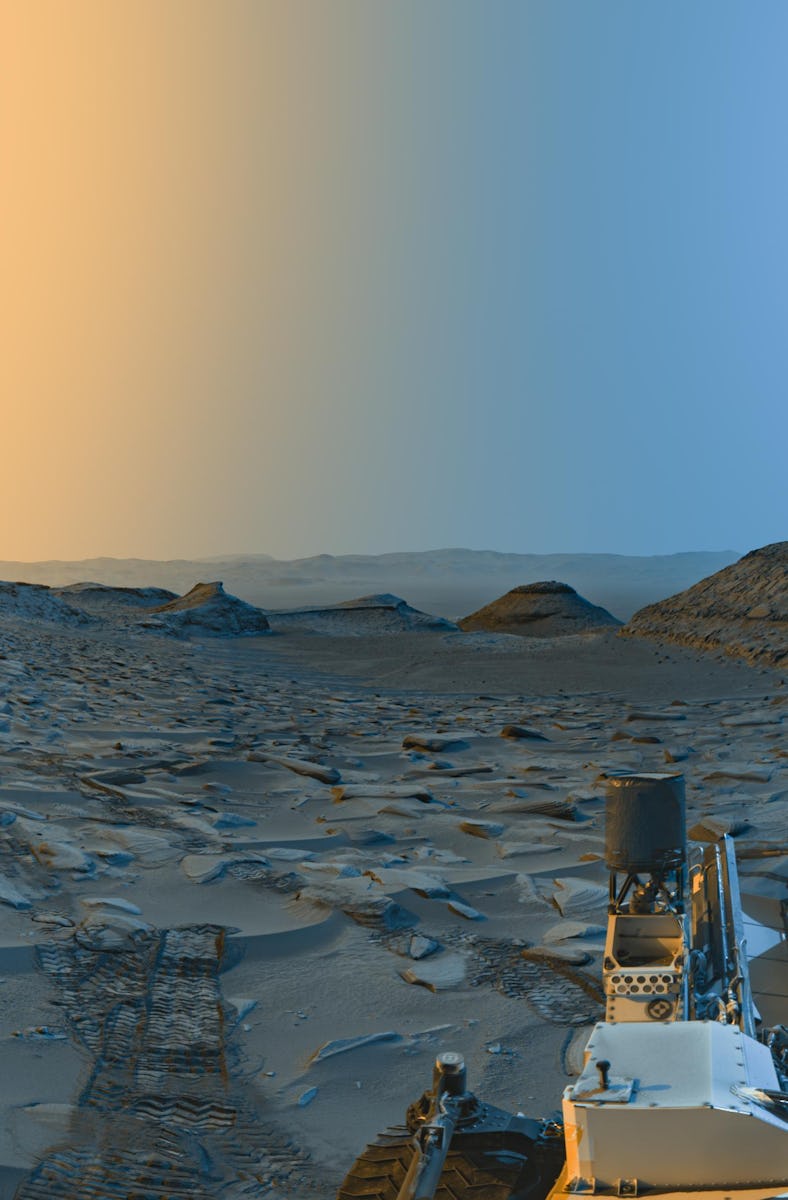Mars Rover Sends a Stunning Panorama of the Red Planet Home to Earth
You can see rover tracks nearby and forbidding mountains in the distance.

It takes a lot of work to send a postcard from Mars.
NASA’s Curiosity Rover recently pointed its navigation cameras back the way it had come to capture two panoramic photos of the rover’s tracks leading out of Marker Band Valley. Curiosity imaging team members created a composite of the images, which was released Monday
You can still get a hint that it’s a composite: The giveaway is in the drastically different angles of the shadows on each side of the image. One panorama shows a mid-morning view, while the other shows late afternoon — both timed to take advantage of the most dramatic natural lighting and the dark, deep shadows of Martian winter.
The Marker Band Valley gets its name from a thin, dark, and surprisingly tough layer of rock that runs along the valley’s walls. Scientists aren’t sure exactly what the marker band is made of because the frustratingly tough rock has resisted all of Curiosity’s efforts to drill out a sample. But it’s home to surprising traces of an ancient lake in an area that mission planners expected to have been dry even during Mars’s warmer, wetter past, Curiosity found layers of rippled rock, still bearing the texture left behind by waves in an ancient lake.
Billions of years ago, waves in an ancient lake carved these ripples into the lake bottom, and now they’re preserved in rock.
If you want to send home a panoramic view from Mars, though, it’s not quite as easy as clicking the panorama option on your phone’s camera and then panning around the horizon (yet). Combined, the two images took about 15 minutes to capture, and each one arrived on Earth as five individual photos, which NASA teams had to carefully stitch together using computer software.
Next, they carefully blended the two panoramas together. And because Curiosity’s navigation camera only takes photos in black and white, NASA decided to add a filter; they carefully colorized both images, using a deep blue sky for the morning shot and a cheery yellow for the afternoon.
This panorama is actually ten separate photos, carefully stitched together and with false color added.
The result is a stunning postcard from Gale Crater, where Curiosity has been exploring since 2012. Curiosity’s tracks in the Martian sand lead back toward a valley called Marker Band Valley, which is home to an ancient lakebed. In the far background, you can see the edge of Gale Crater, 25 miles away and receding into the distance as Curiosity scales Mount Sharp. Beyond the crater’s rim, clear winter skies afford a rare view of an even more distant mountain, 75 miles away from the rover.